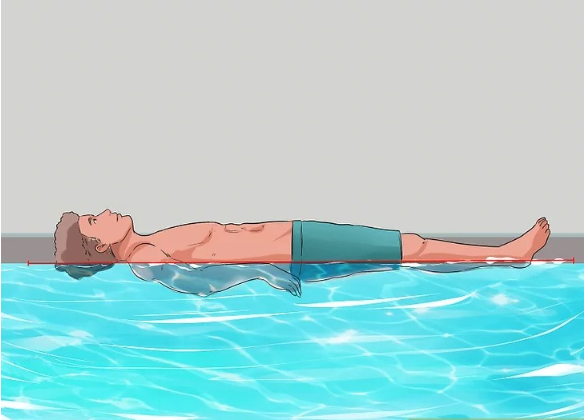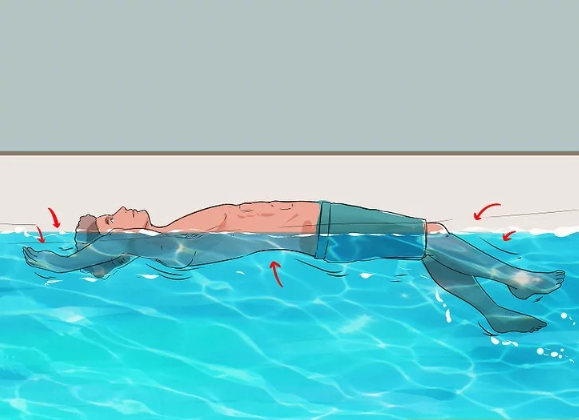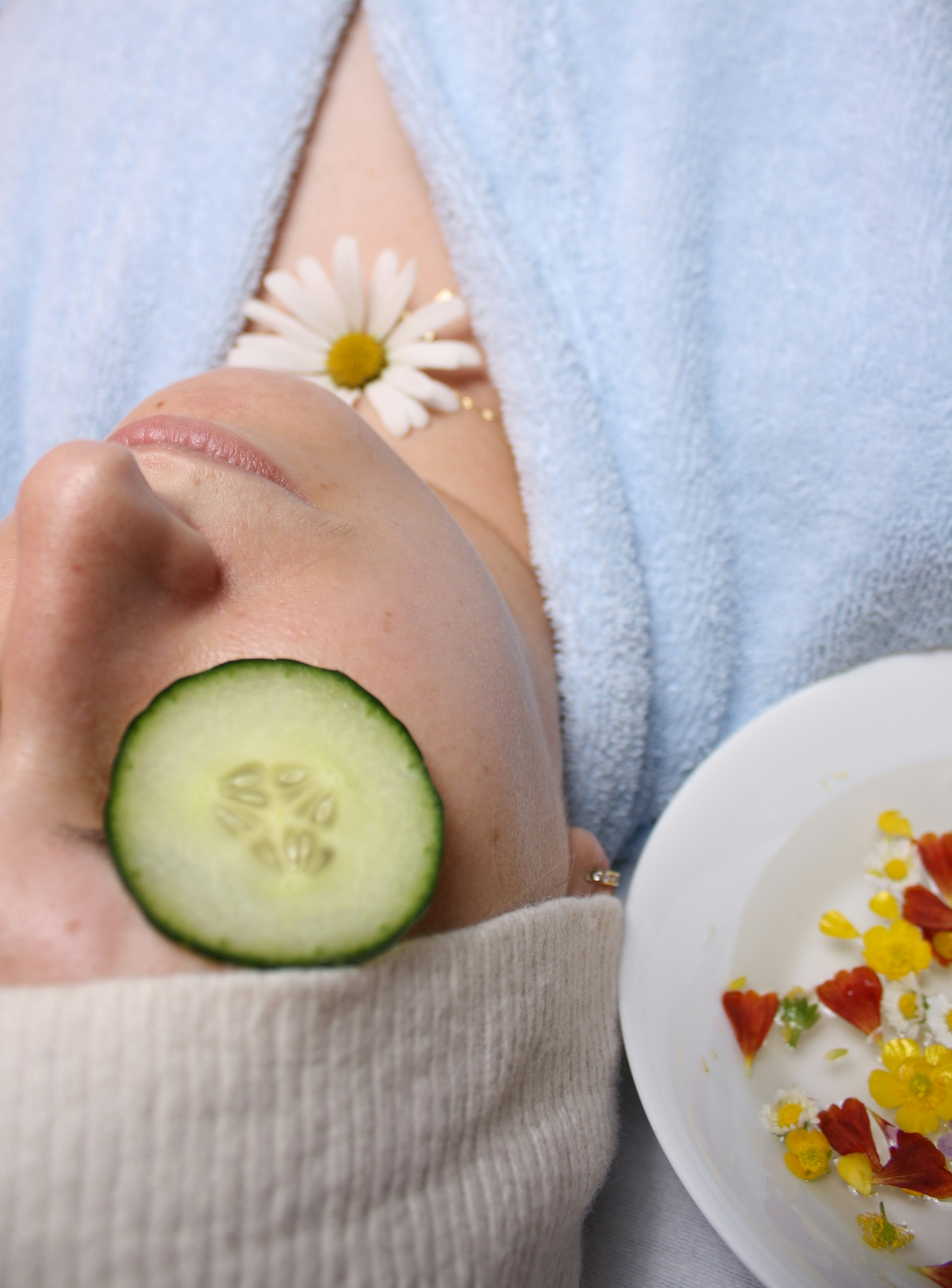Falling into deep water unexpectedly can be a terrifying experience, especially if you don’t know how to swim. Panic sets in, your instincts tell you to struggle, and before you know it, you’re exhausted and in real danger. However, survival in such a situation is entirely possible if you remain calm and follow a set of simple but life-saving steps.
According to Dr. Nash and his team of researchers, the key to survival is overcoming fear instincts and following five crucial steps. These steps are designed to help anyone—regardless of swimming ability—stay afloat, breathe, and increase their chances of rescue. Let’s dive into these life-saving techniques.
1. Stay Calm and Relax to Achieve Natural Buoyancy

The first and most critical step is to fight the urge to struggle. Many people instinctively flail their arms and legs in a desperate attempt to stay above water. However, this only wastes energy and causes faster exhaustion.
Instead, take a deep breath and allow your body to relax. When you stop panicking, your body will naturally float closer to the water’s surface. The human body is slightly less dense than water, meaning that if you remain still, you can achieve buoyancy without much effort.
2. Tilt Your Head Back to Keep Your Airway Clear
Once you’ve calmed yourself and started floating, you need to ensure that you can breathe. The best way to do this is to tilt your head back, keeping your face above the water.
Try not to move too much, as sudden movements can make you sink slightly. If you feel yourself going under, resist the urge to panic—simply take a deep breath, relax your muscles, and allow yourself to rise again.
Video : How to Survive if You Fall in Water – Prevent Yourself From Drowning – Survival Techniques
3. Breathe Slowly and Avoid Inhaling Water
Now that your nose and mouth are above water, it’s time to focus on breathing. Many people instinctively gasp for air, but this can lead to choking if water splashes into your mouth. Instead, practice controlled breathing:
- Exhale slowly through your nose to clear any water that may have entered.
- Inhale through your mouth in a controlled manner.
- If a wave covers your face, hold your breath momentarily, then resume normal breathing.
Even experienced swimmers can struggle if they inhale water, so maintaining steady breathing is crucial for survival.
4. Move Your Arms and Legs Gently to Stay Afloat
At this point, you should be floating on the water’s surface and breathing steadily. The next step is to use gentle, controlled movements to maintain your position.
- Use slow arm movements: Move your arms in a sweeping motion, like you’re making small circles in the water. This will help you stay afloat without expending too much energy.
- Legs should remain still if you don’t know how to kick properly: If you’re unsure how to tread water, keeping your legs still is often better than kicking randomly. Let them sink slightly while focusing on keeping your upper body above water.
The key here is to avoid frantic movements—slow and deliberate strokes will keep you afloat much longer.

5. Look for Rescue Opportunities
Once you’ve gained control of your breathing and movements, your next priority is finding a way to safety.
- Scan your surroundings – Look for anything floating that you can grab onto, such as a buoy, a log, or even a piece of debris. Holding onto something will help you conserve energy.
- Check your distance from the shore – If you can see land, assess whether it’s possible to move toward it using slow, steady movements.
- Signal for help – If there are people nearby, shout for help. However, conserve energy by calling out only when necessary.
If you’re caught in a strong current, do not try to swim directly against it—this will only tire you out. Instead, swim diagonally at an angle to gradually move out of the current’s pull.
What to Do If You See Someone Drowning
If you witness someone struggling in deep water, it’s important to act quickly but safely. Jumping in to rescue them may seem like the right thing to do, but unless you’re a trained rescuer, it could put both of you at risk.
Instead, follow these steps:
- Shout instructions – Encourage the person to follow the survival steps above. Remind them to relax, tilt their head back, and float.
- Find a flotation device – If possible, throw a life jacket, a rope, or any floating object they can grab onto.
- Call emergency services – Immediately contact your local emergency number and provide details of the situation.
Video : How to get over fear of water – Feel safe on the deep end
Why Staying Calm is the Key to Survival
Many drowning incidents occur not because the victim physically sinks, but because they panic and exhaust themselves. Learning how to override panic instincts and follow a survival routine can mean the difference between life and death.
Dr. Nash explains:
“Whether you’re planning a vacation, taking a walk near a river, or going for a swim, knowing how to stay safe in water is crucial. These simple survival techniques can save your life or someone else’s.”
Final Thoughts
Surviving a fall into deep water without knowing how to swim is possible—but only if you remain calm and follow the right steps. By floating, maintaining steady breathing, and making slow movements, you can conserve energy and increase your chances of rescue.
Now that you know these survival strategies, share them with your friends and family. You never know when this knowledge might save a life!
My Family Dumped Grandma at the Airport and Left for Vacation Without Her—They Didn’t Expect Me to Strike Back

Some people show their true colors when you least expect it. For me, it came through a tearful call from my grandma, who was dumped at the airport because my family thought pushing her wheelchair was too much trouble. They went on vacation without her, thinking they’d never face consequences.
After losing both my parents, my family circle had shrunk to just my dad’s sister, Aunt Liz, her husband Ron, and my two grandmothers—including Grandma Ruth, my last connection to Mom’s side. She may use a wheelchair, but she doesn’t let anyone tell her what she can or can’t do… and that’s exactly what I adore about her.

An older woman sitting in her wheelchair | Source: Pexels
Living three states away with my husband and two kids, plus working two jobs, made regular visits difficult. So when a bonus check landed in my account, I thought, “Why not give them a memory?”
I booked my remaining family a fully paid vacation to Paradise Cove. Flights, hotel, meals—all prepaid under my name.
“Amy, you shouldn’t have!” Aunt Liz gushed over the phone. “This is too much!”
“Family comes first, right, Aunt Liz?” I said, and back then, I meant every word.

A delighted senior woman talking on the phone | Source: Pexels
The morning they left, Aunt Liz posted a photo from the airport gate. All smiles with the caption: “Family is everything! ❤️🌴 #Blessed”
I was in my office when my phone rang three hours later.
“Hello?”
“Amy…?” Grandma’s voice trembled, barely audible over the airport announcements.
“Grandma Ruth? What’s wrong?”
“I’m still at the airport, honey. They… they left me.”
“Left you? What do you mean?”

A young woman talking on the phone | Source: Pexels
“Liz said pushing my wheelchair was too much trouble. That I was moving too slowly and they’d miss their flight. They just… walked away.”
My stomach dropped like a stone.
“Where are you exactly?”
“Terminal B. By the coffee shop. I don’t know what to do.”
“Don’t move. I’m going to fix this.”

An airport terminal | Source: Unsplash
I hung up and immediately texted Aunt Liz: “Why did you leave Grandma Ruth at the airport? She’s alone and crying.”
The reply came fast: “We’re on vacation! We’re not babysitters. Maybe if she wasn’t so slow and helpless, she could have kept up. Don’t ruin this for us.”
I stared at those words, something inside me hardening with each second.
“Karen!” I called my assistant. “I need your help.”

A woman talking on the phone in her office | Source: Pexels
While Karen flew back to my hometown to pick up Grandma Ruth, I sat down at my laptop. Every booking—the flights, the hotel, and even the rental car—was under my name. I had full control.
I called the hotel first.
“Paradise Cove Resort, how can I help you?”
“Hi, this is Amy. I need to cancel a reservation.”
After processing the cancellation, I added: “Do you have any availability for a spa package next weekend? Something really nice… and oceanfront.”
“We have our Serenity Suite available with daily massages and premium dining.”
“Perfect. I’d like to book that for two people.”

A woman enjoying a relaxing massage in a spa | Source: Pexels
Next, I canceled my family’s return tickets. No drama, just a few clicks, and their way home vanished.
My phone buzzed a few hours later. It was Karen.
“I’ve got her. We’re grabbing some food before our flight,” she said.
“Put her on a video call, please.”
“Amy?” Grandma Ruth’s voice was steadier now. “Did I do something wrong?”
My heart sank. “No, Grandma. You didn’t do anything wrong. THEY DID.”

A teary-eyed older woman | Source: Freepik
“But why would they just leave me like this?”
“Some people only care about themselves. But I care about you. Karen’s bringing you to my house, and then you and I are going on our own special trip next weekend.”
“Oh, honey, you don’t have to do that.”
“I want to. Ocean views, room service, everything.”
She paused. “What about Liz and Ron?”
“Don’t worry about them. They wanted a vacation. They got one.”

Cropped shot of a woman holding her phone | Source: Pexels
I ignored the flood of calls and texts that started coming in hours later. I imagined them arriving at Paradise Cove, only to learn there was no reservation under their names.
“Amy, there’s a problem with the hotel. Call me back immediately,” Aunt Liz texted, her words tight with irritation.
Twenty minutes later: “This isn’t funny. We’re sitting in the lobby with all our luggage. Fix this now.”
By the third text, panic had crept in: “Please call us back. The whole island is booked solid. We don’t know what to do.”

Suitcases in a hotel lobby | Source: Pexels
I deleted each message as it came in, and Tom brought me a glass of wine while I waited for Karen’s flight to land.
“Still not answering?” he asked.
“Nope.”
“Good.”
“I also canceled their return flights.”

A flight taking off | Source: Unsplash
Tom nearly choked on his wine. “Remind me never to get on your bad side.”
“They abandoned her like she was inconvenient luggage.”
“You did the right thing. When do you plan to talk to them?”
“When Grandma Ruth is safe in our guest room. Not a minute before.”
***
My grandmother arrived just after midnight, exhausted but smiling weakly.
“There’s my girl!” she said, opening her arms to me.

A delighted older lady | Source: Freepik
I hugged her gently, breathing in the familiar scent of lavender and rosemary oil. “I’m so sorry this happened,” I whispered.
“Not your fault. You’re a good granddaughter.”
Once she was settled with tea, I checked my phone. Seventeen missed calls, 23 texts, and five voicemails.
The final text: “HAD TO PAY $460 FOR A FILTHY MOTEL. WHAT DID YOU DO???”
I turned to Tom. “I think it’s time.”

A smiling woman looking at her phone | Source: Pexels
Alone in our kitchen, I dialed Aunt Liz’s number.
“Amy! What’s going on? We’re stranded, the hotel has no—”
“How’s your vacation going, Aunt Liz?”
“What did you do?”
“I canceled everything. Hotel, return flights, all of it.”
“What?? You… you can’t do that!”
“Actually, I can! It was all booked under my name.”

A stunning resort | Source: Unsplash
“Why would you do this to us?”
I laughed. “That’s rich coming from the woman who abandoned a 78-year-old at the airport.”
“We didn’t abandon her. We just—”
“Left her alone, in a wheelchair, with no help. Then lied about coming back.”
“She was slowing us down! We would have missed our flight!”
“So you miss the flight,” I snapped. “All of you. That’s what family does.”

Cropped shot of an older woman sitting while holding her cane | Source: Pixabay
“Don’t lecture me about family. You’re never even around.”
“I work two jobs to support my children. And still found the time and money to send you on vacation.”
“Where is she?”
“Safe… with people who actually care about her.”
“You need to fix this. Book us new flights home, at least.”
I took a deep breath. “No.”
“No? What do you mean, no?”
“Figure it out yourselves. Consider it a life lesson in consequences.”

A smiling woman talking on the phone | Source: Pexels
“You snake!” she spat. “Your mother would be ashamed of you.”
“My mother would be horrified by what you did. Don’t speak for her.”
“We’re family, Amy. You can’t just—”
“Family doesn’t leave family behind. You made your choice at that airport gate. I’m making mine now.”
I hung up and blocked her number.

Close-up shot of a woman holding her phone | Source: Pexels
The spa weekend with Grandma Ruth was everything I’d hoped. We got massages as waves crashed outside, ate seafood overlooking the ocean, and talked for hours about Mom, life, and everything.
On our last evening, we sat on the balcony with glasses of champagne, and Grandma took my hand.
“This isn’t the first time Liz and Ron have treated me… differently. Since your mom passed, they’ve canceled plans and forgotten to include me. I didn’t want to burden you.”
My heart ached. “Why didn’t you tell me?”
She patted my hand. “You have your own family and troubles, dear. I didn’t want to be a burden.”

A young woman holding an older person’s hand | Source: Pexels
“You could never be a burden, Grandma.”
She smiled, her eyes crinkling. “I know that now.”
Before bed, I posted a photo of us. Grandma Ruth in a fluffy spa robe and me with my arm around her, tropical flowers in our hair.
The caption? “Family is everything. 🥰“
***
My cousin Jen called the next day.
“Mom and Dad are losing their minds. They spent three nights in some roach motel. Dad got food poisoning.”
“Tragic!”

A motel | Source: Unsplash
Jen snorted. “Between us? They deserved it. I can’t believe they left Grandma Ruth.”
“You didn’t know?”
“No! Mom tried to spin some story about Grandma choosing to stay behind, but Dad cracked under questioning. Your revenge was pure art, by the way. Evil genius level.”
I laughed. “Is that a compliment?”
“Absolutely. Is Grandma okay?”
“She’s great. We just got back from Paradise Cove. Spa treatments, room service, the works.”
“Oh my God! You didn’t…!?”
“I did! With plenty of pictures for your parents to enjoy.”

A woman relaxing in a spa | Source: Unsplash
It’s been two months since the airport incident. Aunt Liz and Uncle Ron still aren’t speaking to me… a bonus I didn’t even ask for.
Grandma Ruth moved in with us last week. We converted the office into a sunny bedroom overlooking the garden. The kids adore having her. She’s teaching my daughter to knit and my son how to make her famous apple pie.
Last night, as we sat watching fireflies blink in the gathering darkness, she turned to me.
“Thank you, sweetie.”
“For what?”
“For showing me that I matter.”

An emotional older woman | Source: Freepik
I rested my head on her shoulder, just like I used to do as a little girl. “You’ve always mattered, Grandma.”
“Maybe so. But sometimes we need reminding.”
We sat in comfortable silence for a while.
“You know what I’ve learned?” I said finally.
“What’s that, sweetheart?”

An emotional older woman looking at someone | Source: Freepik
“People show their true character not through grand gestures, but through small, everyday choices. Who they help when it’s inconvenient. Who they protect when it costs them something.”
Grandma nodded. “And who they leave behind when no one’s watching.”
“Exactly.”
She squeezed my hand. “Well, I’m watching now. And I see you, Amy.”
Some people say revenge doesn’t solve anything. Maybe they’re right. But sometimes justice tastes like room service pancakes shared with a grandmother who finally knows how cherished she truly is. And that feels like healing enough for me.

Close-up shot of a young woman holding an older lady’s hands | Source: Freepik



Leave a Reply